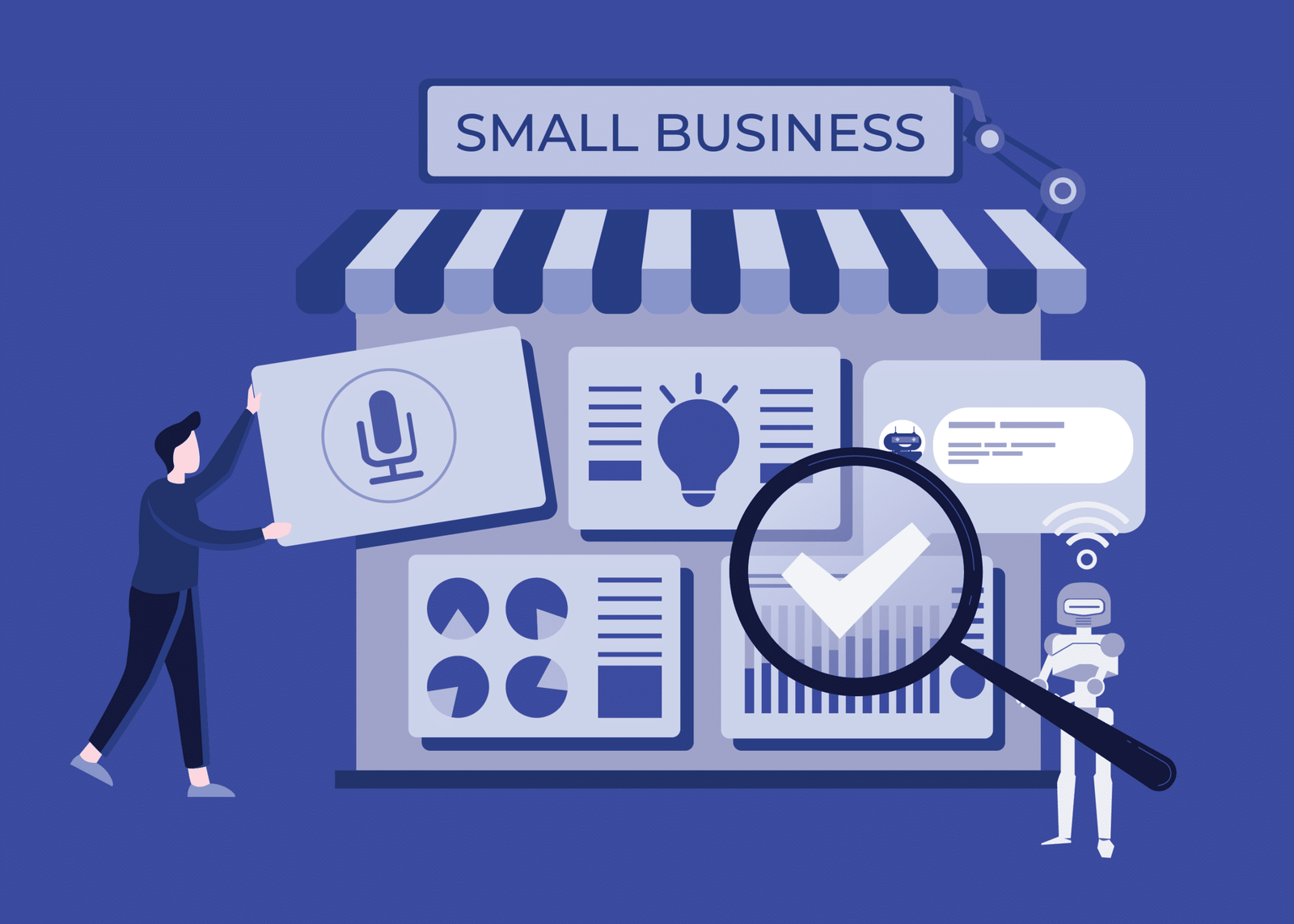1. Introduction: How Can AI Help Small Businesses Boost Productivity?
In 2025, small businesses will face numerous challenges, from funding shortages to employee management, inefficiency, and changes in customer demands.
Traditional solutions often fail to meet the growing needs, but artificial intelligence (AI), as a powerful technology, is bringing revolutionary changes to these businesses.
With AI-powered productivity tools, small businesses can improve work efficiency, optimize business processes, reduce operational costs, and compete more effectively—even bridging the technological gap with larger enterprises.

2. Why Do Small Businesses Need AI-Driven Productivity Tools?
For small businesses, AI offers several significant advantages:
- Increased Efficiency: AI can automate routine tasks such as data entry, email responses, and customer communication, reducing repetitive labor and enhancing response speed.
- Optimized Resource Allocation: Through data analysis, AI helps businesses identify bottlenecks in resource allocation, allowing for better optimization of finance, personnel, and inventory management.
- Cost Reduction: AI lowers labor costs and error rates by automating processes and making intelligent decisions.
- Enhanced Customer Experience: AI-powered customer service systems can provide instant feedback 24/7, improving customer satisfaction.

3. Common AI Tools and Applications for Small Businesses
Here are some popular AI tools and their applications:
- Automating Tasks and Processes
- Zapier: Automates tasks across different platforms by connecting various apps (e.g., automatically processing orders, sending notifications) and reducing manual intervention.
- Trello & Asana: AI features in project management tools help auto-generate task priorities, optimizing team members’ time and work schedules.
- Customer Support and Relationship Management
- ChatGPT / AI Chatbots: Automatically respond to common customer inquiries on websites or social platforms, freeing up human customer support and improving response efficiency.
- HubSpot CRM: Uses AI to analyze customer data, automatically track sales leads, and improve customer relationship management and marketing effectiveness.
- Marketing Automation
- Mailchimp: Uses AI to analyze customer behavior and automatically adjust email marketing content and send times, improving the effectiveness of ad campaigns and email marketing.
- Google Ads & Facebook Ads: AI helps optimize ad budgets, strategies, and audience targeting through data analysis, boosting ROI.

4. Trends in AI Tool Usage for Small Businesses in 2025
- Trend 1: The Popularity of Low-Code/No-Code AI Tools
More low-code and no-code platforms are emerging, allowing small business owners to automate workflows and perform data analysis without any coding experience.- Recommended tools: Low-code platforms such as Bubble and Adalo.
- Trend 2: Integrated AI-Enhanced Data Analytics Tools
AI will empower small businesses to make precise decisions using real-time data analysis, increasing market responsiveness and competitiveness.- Recommended tools: Data analytics platforms like Google Analytics 4 and Tableau.
- Trend 3: AI-Driven Personalized Customer Experiences
AI will help small businesses better understand customer preferences and offer tailored product recommendations, promotions, and services, enhancing customer experience and loyalty.- Recommended tools: Customer analytics platforms like Segment and CleverTap.

5. How to Choose the Right AI Tools for Small Businesses?
Choosing the right AI tools is crucial for successful implementation. Here are the factors to consider when selecting tools:
- Evaluate Business Needs: Choose the most suitable tools based on your business needs (e.g., automation, marketing, financial management).
- Ease of Use and Flexibility: Select tools that are easy to use and scalable, able to grow with the business.
- Budget Management: Given that small businesses usually have limited budgets, prioritize cost-effective tools that offer free trials or pay-per-use options.
- Integration and Compatibility: Ensure that the chosen tools can seamlessly integrate with existing systems to avoid operational difficulties caused by technical incompatibility.

6. Best Practices for Implementing AI Tools in Small Businesses
To ensure AI tools effectively enhance productivity, here are some best practices for implementation:
- Step 1: Start Small, Gradually Introduce AI
Don’t feel the need to implement AI across the entire business at once. Start with one department or process (e.g., customer support or financial management) and gradually assess its effectiveness. - Step 2: Employee Training and Support
Ensure employees are well-trained to use AI tools and improve their technical literacy and efficiency through regular training. - Step 3: Monitor and Optimize
Continuously track the effectiveness of AI tools, gather feedback from employees and customers, and adjust tool settings based on actual needs to ensure long-term benefits.

7. Three Major Pitfalls to Avoid in AI Implementation
- Over-reliance on AI: While AI can automate many tasks, it cannot fully replace human intelligence, especially in complex decision-making and creative tasks.
- Data Privacy Issues: Ensure compliance with data protection regulations (such as GDPR) to avoid legal risks due to data breaches.
- Choosing Inappropriate Tools: Avoid selecting AI tools that are only suited for short-term problems. Make sure the tools chosen can meet long-term business needs.

8. Neo’s Final Thoughts
The world of AI is complex yet fascinating. Don’t hesitate any longer—take the step and bring AI into your business.
If you find yourself hesitating, let me remind you: “The competition of 2025 starts now.” Embrace AI, and not only will your business soar, but it will also flip and soar even higher, overtaking those big companies still crawling on the ground.
That’s all for now—take action today! Neo is waiting for you, coffee in hand, ready to face the future challenges together!


